Match the following lists :
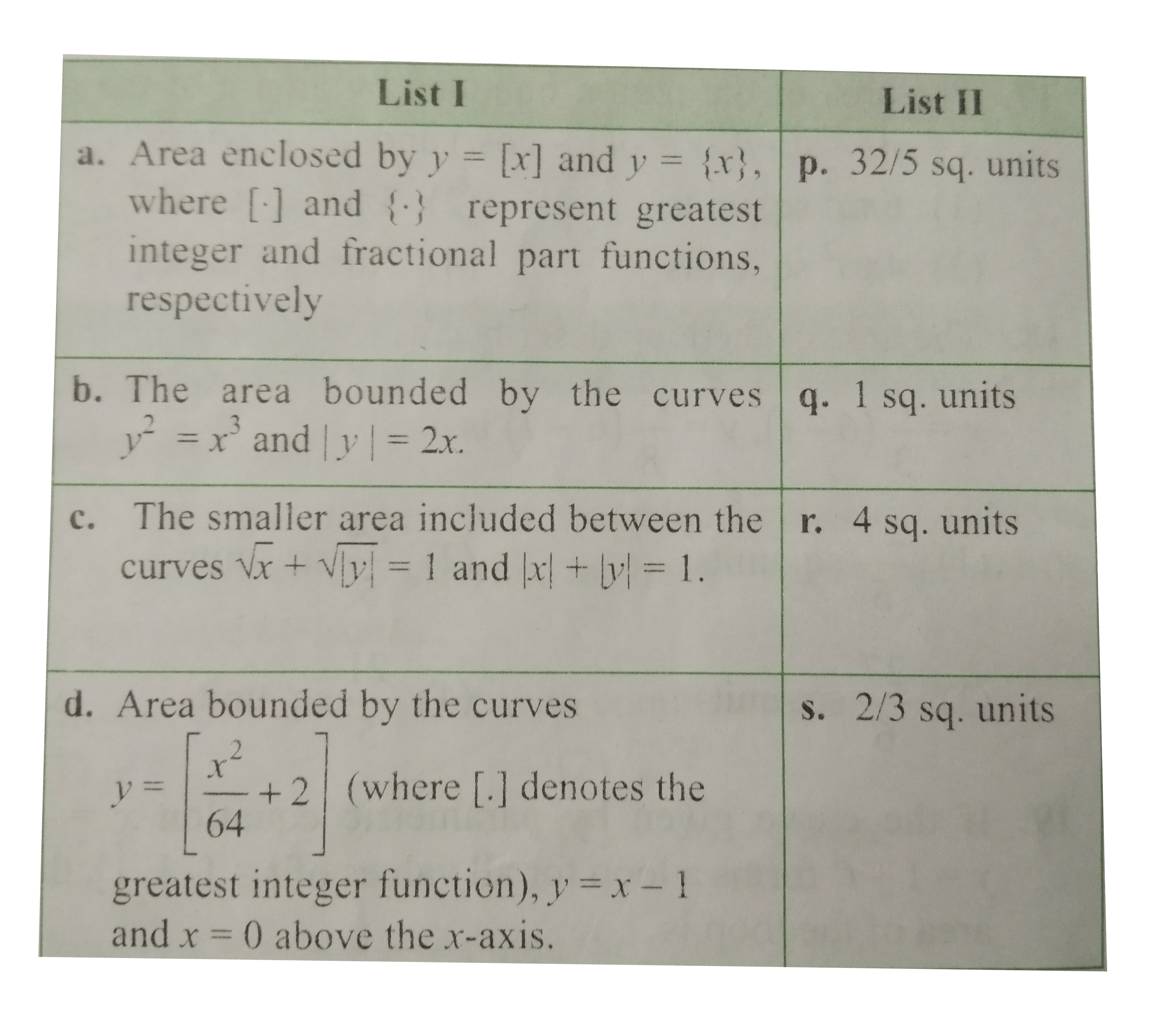
Text Solution
The correct Answer is:A, B, C, D
a. Area =2(121×1)=1 sq. units.
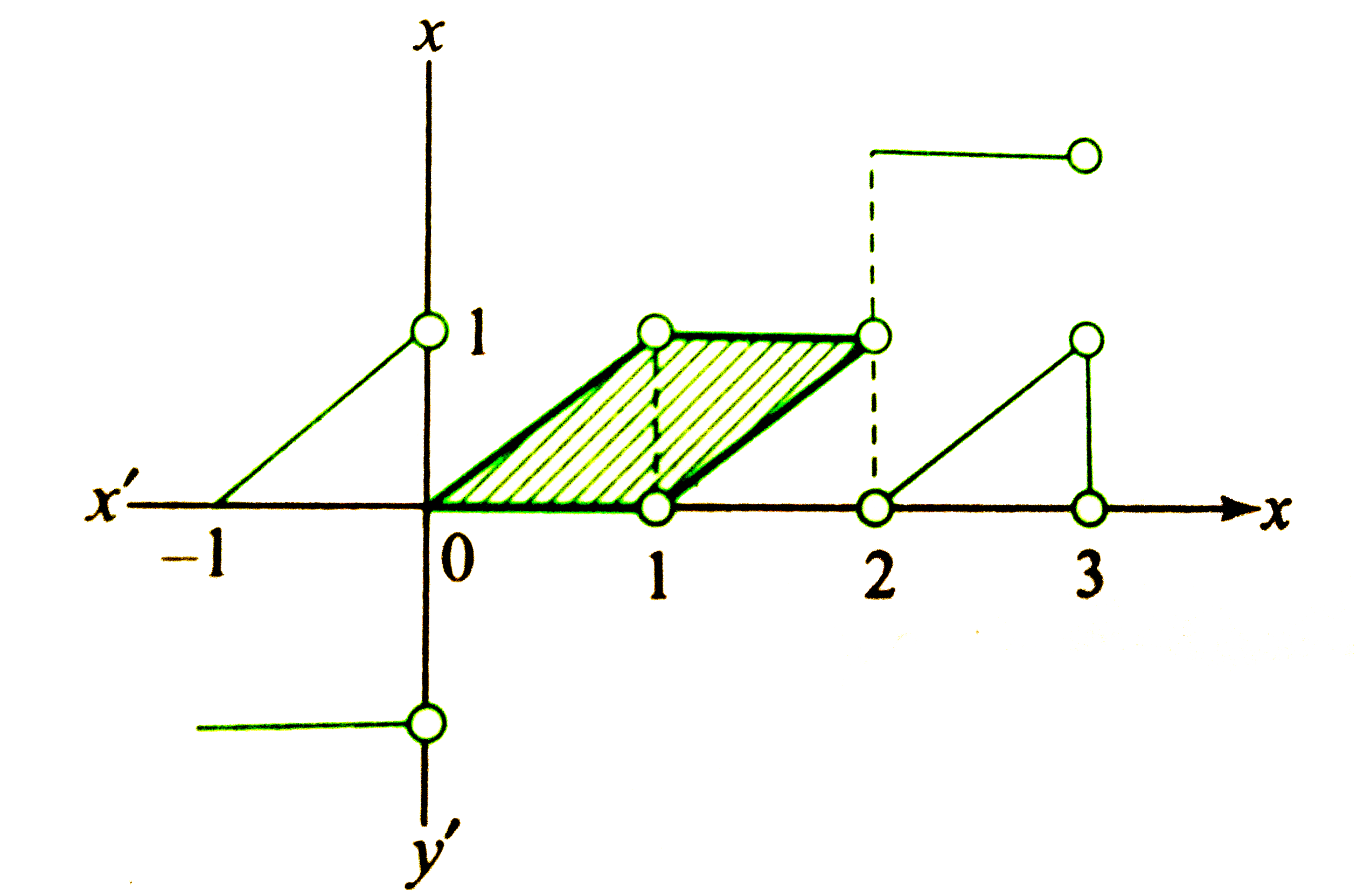
b. y2=x3and|y|=2x, both the curve are symmetric about y-axis
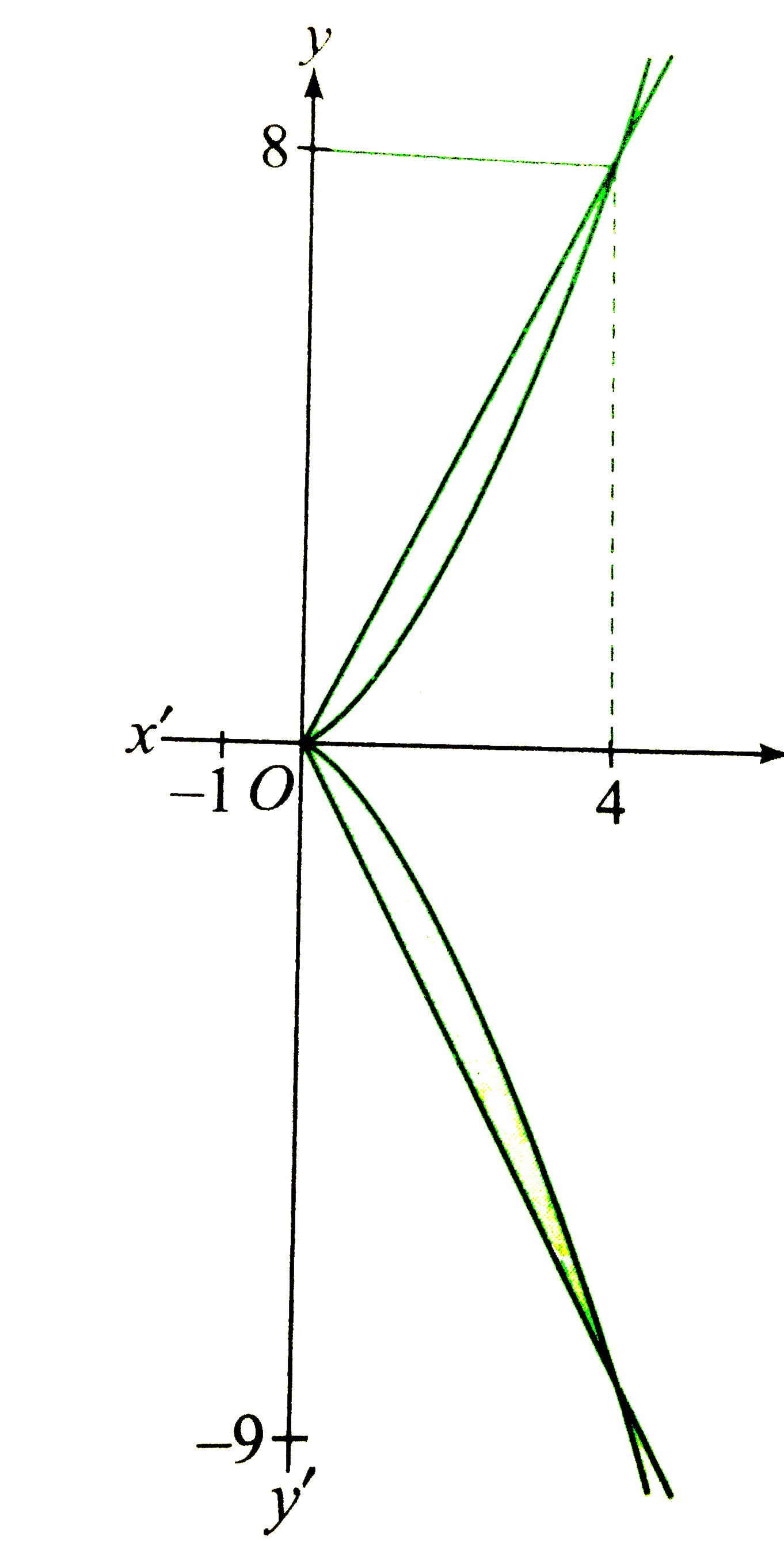
4x2=x3orx=0,4.
Required area =24∫0(2x−x3/2)dx=325 sq. units.
c. √x+√|y|=1
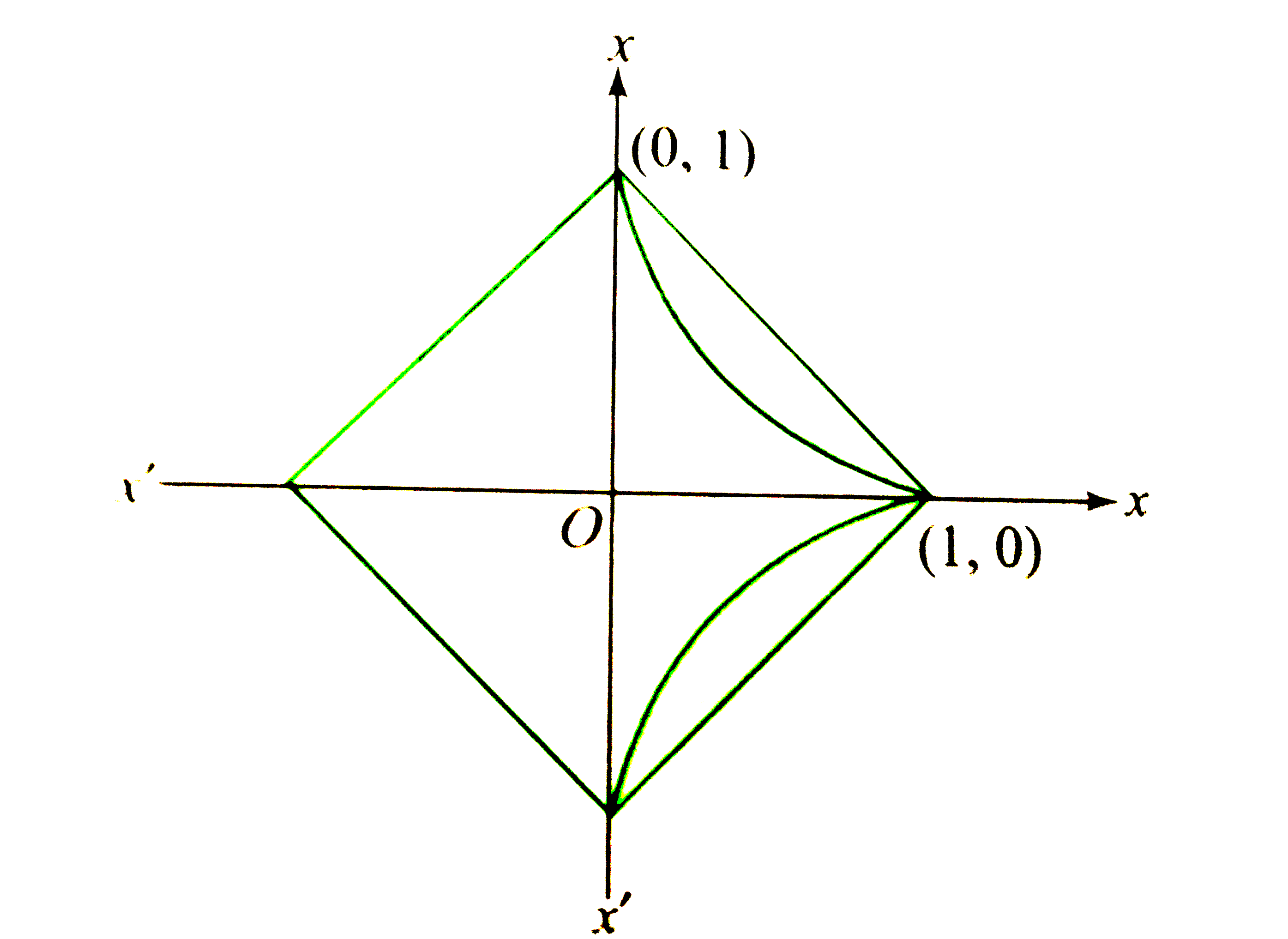
The curve is symmetrical about x-axis
√|y|=1−√xand√x=1−√|y|
⇒ for x>0,y>0√y=1−√x
12√ydydx=−12√x
dydx=−√yx
dydx<0, function is decreasing
Required area =21∫0((1−x)−(1−2√x+x))dx
=41∫0(√x−x)dx
=4[x3/23/2−x22]10
=4[23−12]
=23 sq. units.
d. If −8<x<8, then y=2.
If x∈(−8√2,−8]∪[8,8√2), then y=3, and so on
Intersection of y=x−1andy=2. We get x=3∈(−8,8).
Intersection of y=x−1andy=3.
We get x=4∉(−8√2,−8]∪[8,8√2).
Similarly, y=x−1 will not intersect y=[x264+2] at any
other integral, except in the interval x∈(−8,8).
Required area (shaded region ) =2×3−12×2×2
=4 sq. units.
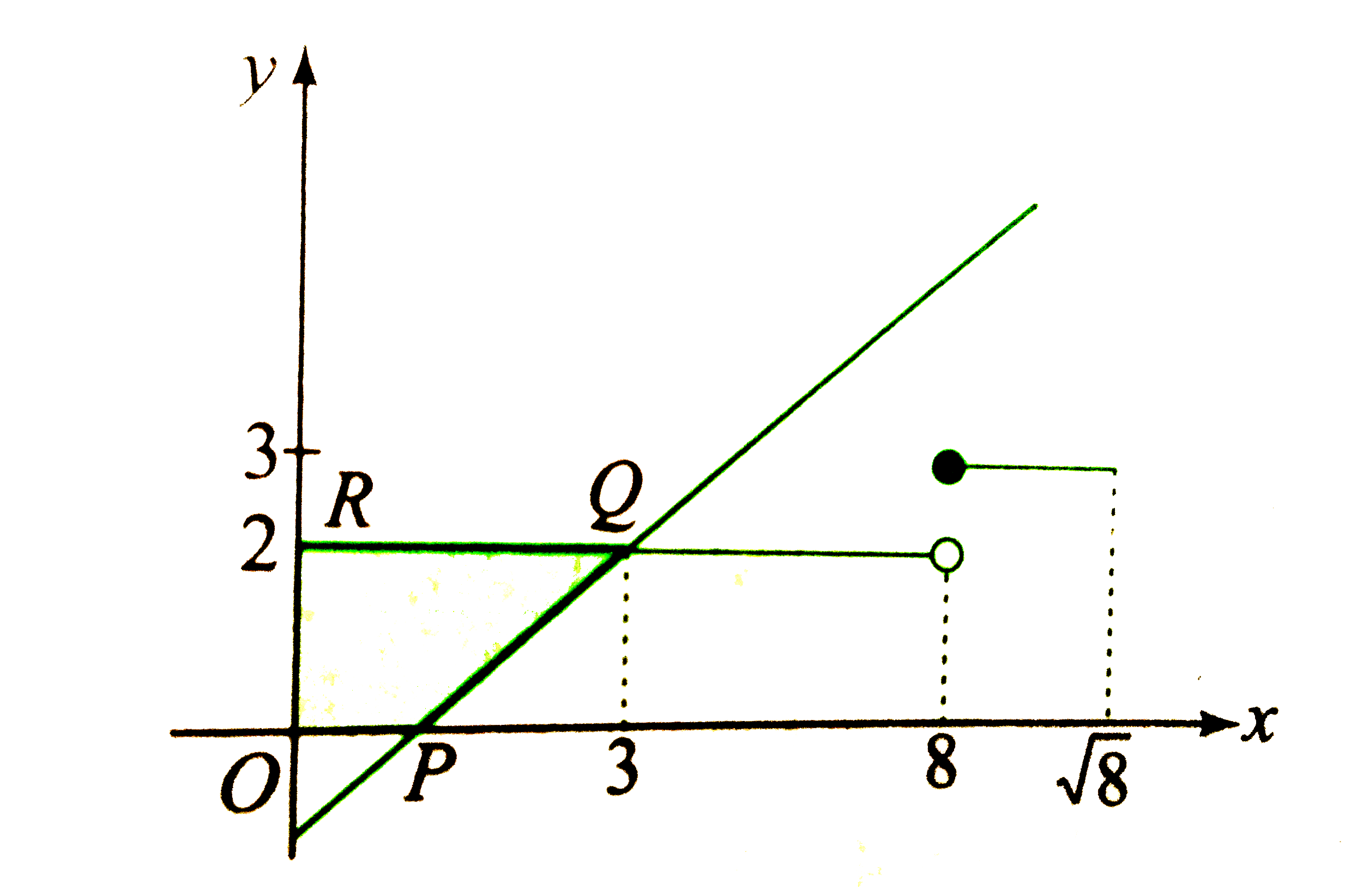
|
Topper's Solved these Questions
- AREABOOK - CENGAGECHAPTER - AREAEXERCISE - Exercise (Numerical)
16 Videos
- AREABOOK - CENGAGECHAPTER - AREAEXERCISE - JEE Main Previous Year
10 Videos
- AREABOOK - CENGAGECHAPTER - AREAEXERCISE - Exercise (Comprehension)
21 Videos
- APPLICATIONS OF DERIVATIVESBOOK - CENGAGECHAPTER - APPLICATIONS OF DERIVATIVESEXERCISE - Question Bank
29 Videos
- AREA UNDER CURVESBOOK - CENGAGECHAPTER - AREA UNDER CURVESEXERCISE - Question Bank
20 Videos
